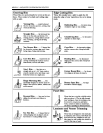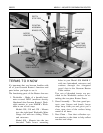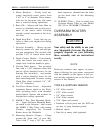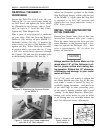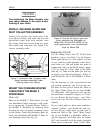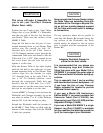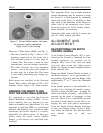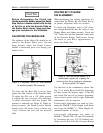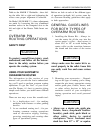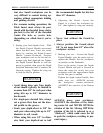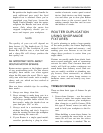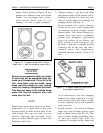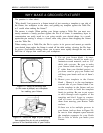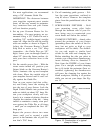
MARK V – MOUNTED OVERARM PIN ROUTER 555970
17
ROUTER BIT TO GUIDE
PIN ALIGNMENT
When performing pin routing operations, it’s
critical that the Router Bit and Guide Pin be
in perfect alignment with one another.
To check this alignment, insert a 3/8" diam-
eter straight Router Bit into the collet of your
Router Motor and tighten securely. Screw the
3/8" Guide Pin into the threaded center hole
in the Overarm Router Table Insert. Lower
the motor so your Bit is approximately 1"
above the Guide Pin.
Use the base of the combination square (See
Fig. 9) to check Bit-to-Guide-Pin alignment
at three points 90 degrees apart. If the Bit
and Guide Pin are not in perfect alignment,
front-to-back and/or left-to-right Worktable
adjustments will be required.
Front-to-back adjustments are made by loos-
ening the MARK V Table Height Lock Knob
and using the MARK V’s Table Height ad-
justment handles or knobs.
Left-to-right adjustments are made on
MARK V Models 505, 510 and 520 machines
by loosening the two 1/4"-20 flathead ma-
chine screws that hold the Overarm Router
CAUTION
Before disengaging the Clutch and
Handle assembly, always adjust the Depth
Stop Rod so it makes contact with the top
of the Arm or hold the Dovetail Slide so
the Router Motor doesn’t drop and dam-
age your workpiece or the Worktable.
ADJUSTING THE BRASS GIB
The tightness of the Brass Gib should be ad-
justed so the Router Motor won’t slip and
drop abruptly when the Depth Control
Handle is unscrewed prior to re-setting your
depth-of-cut.
If it does slip, the Brass Gib is set too loose
against the side surface of the Dovetail Slide.
To adjust the Gib, use a 1/8" Allen wrench
to tighten the four setscrews (26) uniformly
in small increments until the proper Gib
pressure is achieved (see Figure 8). When ad-
justed properly, the Depth Control Handle
should move the motor freely without any
“slop” between the arm and the dovetail
slide.
Figure 8. If required, use a 1/8" Allen wrench
to achieve proper Gib pressure.
Figure 9. Use the handle portion of a
combination square as a gauge for
checking the bit-to-guide-pin alignment
at three points, 90° apart.



